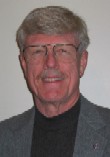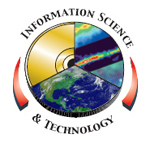
Please Note: The content on this page is not maintained after the colloquium event is completed. As such, some links may no longer be functional.
Gran Paules
Understanding Our World of the Future: Mastering the Information Bonanza
Wednesday, January 28, 2004
Building 3 Auditorium - 3:30 PM
(Refreshments at 3:00 PM)
Mr. Granville Paules, will talk about Future Sensorweb Concepts. Over the past two years NASA's Earth Science Enterprise has focused significant attention on defining its scientific, applications, and technology strategies and programmatic implementation for the next Decade and beyond. Greatly improved forecasting capabilities are envisioned for all areas of scientific understanding. Progress must continue to be made in the scientific theme areas such as Short and Long Term Climate, the Global Water Cycle, and Solid Earth. An Earth Science Vision for the 2030 Era recognizes that there often exists subtle but significant interdisciplinary interaction among these science theme areas. Models of various phenomenology will be linked to enable the spatially, spectrally, and temporally sensitive forecasting envisioned for the future. Output from key elemental models may dynamically drive operation and configuration of the observing systems. A robust, integrated observing and measurement system using many vantage points and operating as a "web of sensors" is likely required. Both the modeling and the observing system capabilities will be highly dependent on technological advances in all areas of information systems and high performance computing. The Earth Science Technology Program has been structured to respond to this vision of the next decade and beyond. Examples focused on the information systems challenges will be presented.
Mr. Granville Edward Paules III received an B.S.E.E. degree with emphasis on digital computing from the University of Texas at Austin where he attended on a Naval ROTC scholoship. Later he received an M.B.A. degree from the University of Maryland with emphasis on Operations Research and Information Systems. Following assignment as a shipboard Communications and then Missile Officer in the U.S. Navy, he joined NASA's Apollo Lunar Landing Program as an Apollo Mission flight controller in the Mission Control Center at the Johnson Space Center in Houston, Texas. He served as Guidance Officer on such key missions as Apollo 11 that made the first Lunar landing. He received numerous awards for outstanding performance during flight operations including the Presidential Medal Freedom, a team award for bringing the crew safely back to Earth on Apollo 13. During a 14-year period between tours at NASA he held senior R&D management positions at the Department of Transportation and leadership positions for related R&D committees with the National Academy of Science's Transportation Research Board. He was awarded the Department's Bronze Medal for Superior Achievement. He returned to NASA Headquarters in 1985 and served as Operations Director for the International Space Station Program during its early development phases. Responsibilities included development of the overall concept of operations and its implementation through negotiation of memoranda of agreement with Canadian, European, and Japanese partners. In 1994 he joined NASA's Office of Earth Science (OES) as its Chief Technologist where he formulates and coordinates implementation of the strategy, policies,and plans that lead to the identification, development, and infusion of new technologies into planned and future missions. The approach is strongly linked to the science and applications objectives and requirements of OES and ensures that key enabling technologies be developed and validated in advance of relevant science missions. In this role he provided Headquarters leadership in the recent development of an Enterprise long range vision requiring advanced sensorweb concepts. The annual technology budget for the Enterprise is $80-100M. He received NASA's Exceptional Service Medal for his leadership in developing a related Enterprise Commercial Strategy. As Deputy Director of the Earth Science Program Planning and Development Division, he has responsibilities for the formulation and implementation of new Enterprise missions. The Division directs and oversees a $600M-800M annual budget. He actively participates in technical and scientific workshops and conferences as a member of AIAA and IEEE. He was elected to the IEEE Geoscience and Remote Sensing Society's Advisory Committee for 2002 and 2003.
IS&T Colloquium Committee Host: Jacqueline LeMoigne
